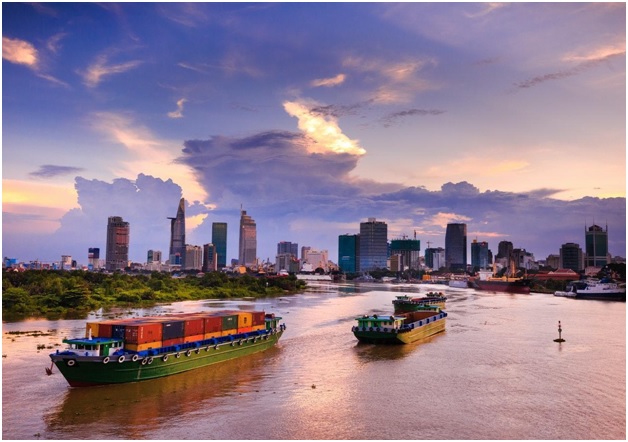A large part of international trade depends upon maritime transportation. The traders seem to trust the seaborne transportation process much more than the airborne even though the latter is comparatively faster. Most of the reports suggest that over 80% of shipments travel through international waters rather than air. Therefore, it is essential for all the aspiring traders and the existing ones to know the export process of international trade. The international shipping process comprises a lot of steps and formalities. If we divide the entire export process of freight shipment into steps, there would be seven divisions.
The exporters and importers can reduce costs and effort considerably if they understand the international shipping process. It will also allow them to discuss the payment and risk liabilities of both parties associated with each step to avoid further confusion.
The international shipping journey of freight shipments is full of hope and uncertainties.
Steps Involved In The International Shipping Process
The export process involves a lot of legal formalities and paperwork. Each step is very crucial as a glitch in even one can hamper the entire process. Exporters must take immense care of the parties they choose to help them in international shipping. Like, the freight forwarders or the CHAs (Customs House Agents) have to be trustworthy and responsible to ensure that everything is on track!
Export Inland Haulage
The export process starts from the seller/exporters godown or warehouse where he stores the goods. After the packing process completes, the exporter sends the cargo to the port of shipment. If the consignment is small and the shipping is through LCL (Less than Container Load), the exporter can choose to take care of the export haulage himself. Otherwise, one has to hire inland logistics services for safe and secure delivery of the cargo to the port.
Customs Clearance For Exporting
Customs Clearance is a vital part of the process, and probably the most important documentation required for international shipping. A shipping consignment cannot cross the geographical boundaries of a country without getting clearance from the customs department. For this purpose, exporters have to rely on the customs agents as they know all the nitty-gritty of the formalities involved in the same. For a smooth export process, a trader can also take the help of the companies that offer shipping solutions.
Loading At The Origin Port
Once the cargo reaches the port of delivery, all the paperwork is shown to the port authorities after which they grant permission to load the goods in the vessel. The loading process is a tricky one, and traders should ensure that everything is conducted under the surveillance of reliable authorities. Traditionally, this process involved a lot of manpower. Today, port authorities have all the equipment and cranes to load and unload the goods safely.
Journey In The International Waters
Once the cargo is onboard, the export process reaches midway. The exporters can release a sigh of relief knowing the fact that they can easily track the whereabouts of the cargo. Yes, if one is smart enough to choose the best freight forwarders, container tracking is not a difficult task at all. The better alternative is to take the help of the shipping service providers who are offering the best tracking facilities.
Unloading At The Destination Port
It usually takes a minimum of 5-7 days for cargo to reach its destination port. This period will vary depending upon the shipping line, the number of stoppage the ship takes, and the route of shipment. Since the shipping vessels can contain multiple containers at a time, one trip usually has more than one station. The route of shipment is planned by the freight forwarders in cooperation with the port authorities.
Customs Clearance For Importing
The export process involves two customs clearances. The first is done before the cargo leaves the port of origin while the other is completed at the time of import. The customs department of the importer’s country is liable to check the details of the consignment. The CHA helps in this process even in the other countries since they have contacts in almost all the operating custom houses. The document verification process involves paying import duties and taxes after which the cargo can leave the destination port. This paperwork takes a few hours in general.
Import Inland Haulage
After the customs department approves the cargo to be legally viable, the importers can collect it from the destination port with the help of inland haulage services. If the contract states that the exporter has to bear the cost of risks of delivering the cargo to its final destination, he has to arrange import inland logistics services as well.
The aforementioned steps sum up the export process and all the physical and documentation processes involved in the same. The cost and risk liabilities may shift between the two parties as per the shipping contract they sign. Nonetheless, the export process depends on smooth coordination between the importers, exporters, and freight forwarding service providers.
























































